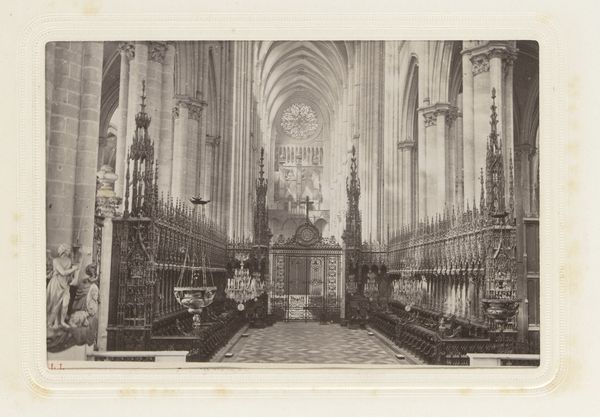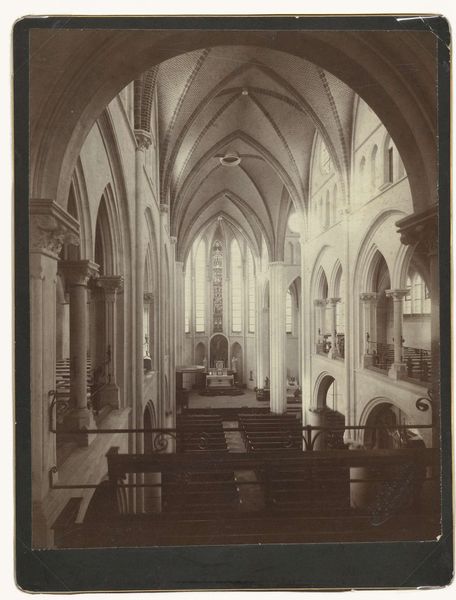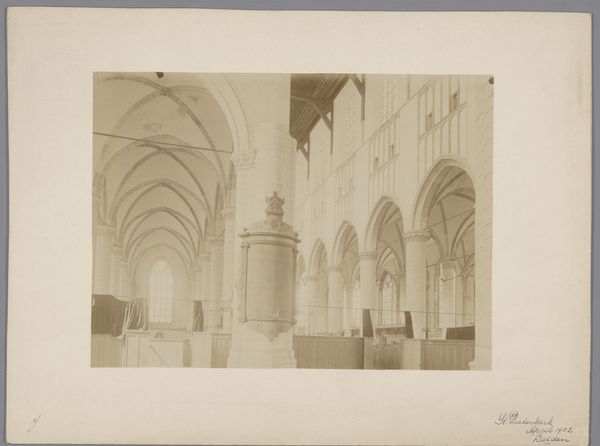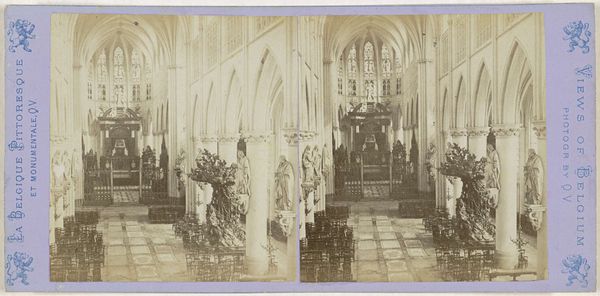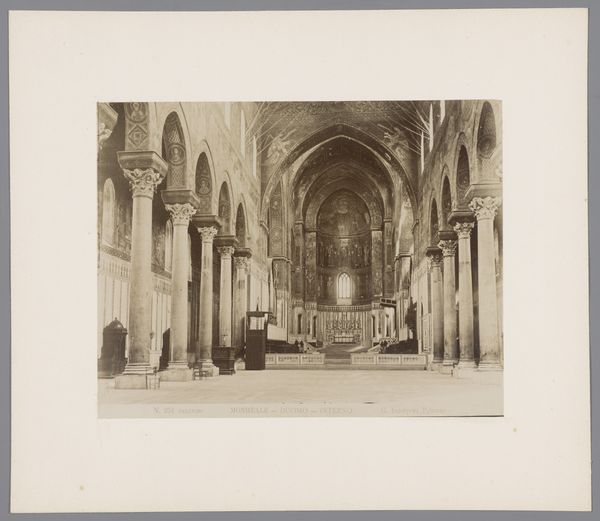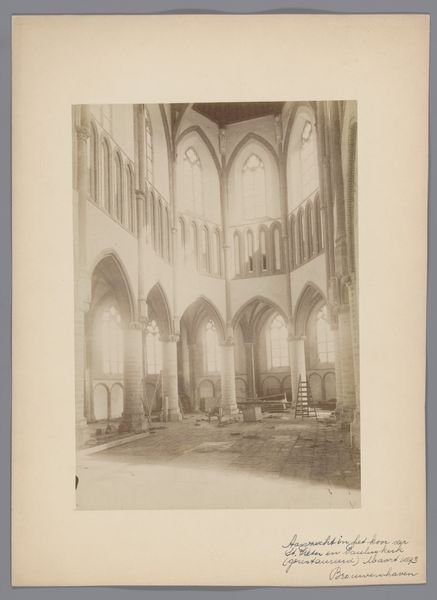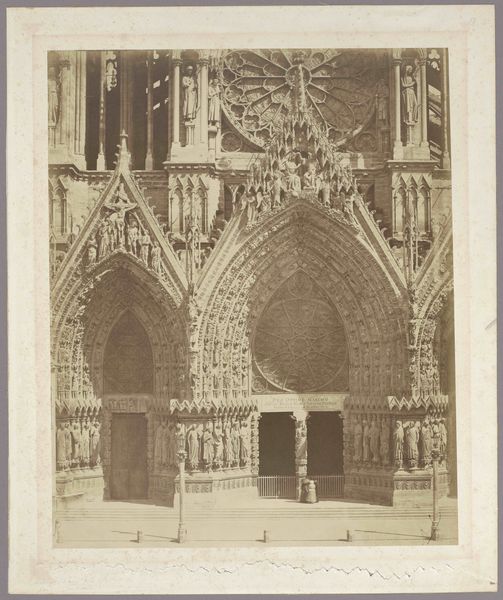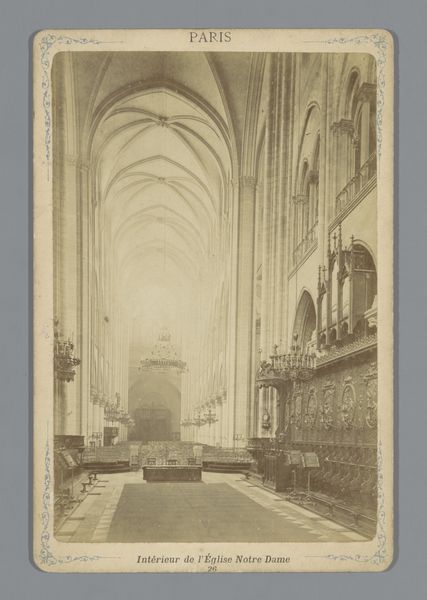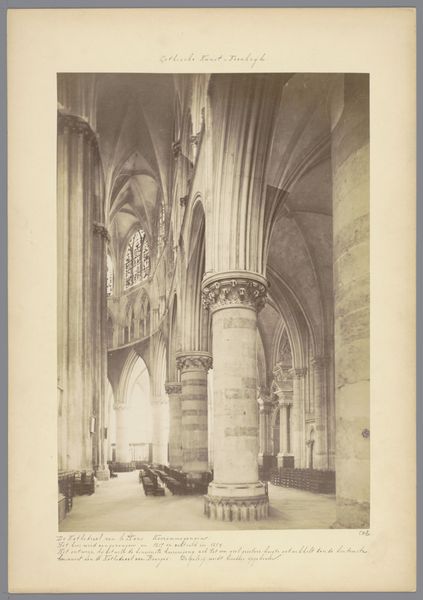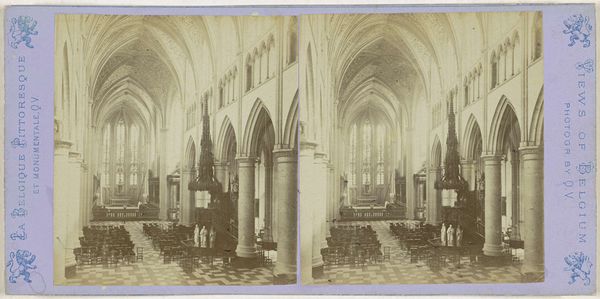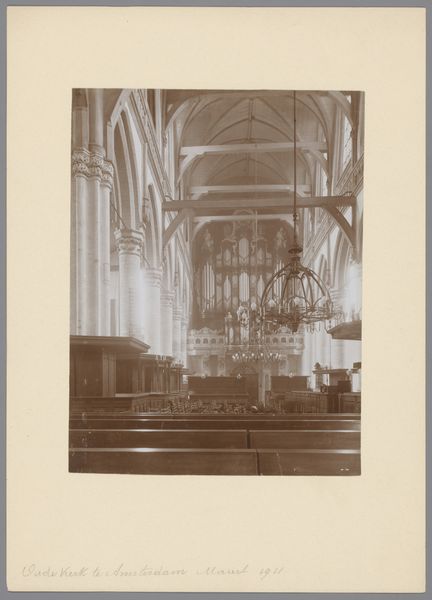
Dimensions: height 106 mm, width 65 mm
Copyright: Rijks Museum: Open Domain
Curator: This gelatin silver print, taken sometime between 1860 and 1885, presents the interior of the Cathedral of Geneva. It is credited to a photographer by the name of Garcin. What strikes you initially? Editor: The overwhelming sense of height. The columns are so slender and so tall, stretching upwards. The light pouring in feels almost celestial, while the benches look small and almost empty. Curator: Precisely. Consider the 19th century and the growing popularity of the gothic revival style. Architects and, indeed, photographers were fascinated with these cavernous interiors, the emphasis on verticality meant to inspire a sense of awe and spiritual longing in the viewer. Editor: It’s difficult to escape the history, particularly in a space like this, which has witnessed so much. Geneva, after all, played a crucial role in the Protestant Reformation. What’s especially interesting is that the photography creates a sense of permanence, preserving the legacy for posterity. Curator: That’s an excellent point. Photography during this period was evolving. The desire to capture and document historical sites with precision aligns with broader trends in the Victorian era such as archaeology and historic preservation. Editor: However, the history cannot be neutral, it serves specific cultural and religious narratives. It can suggest exclusion just as readily as inclusion depending on the power relations at play at a specific time. And what is missing also holds relevance here. There's no actual presence of people within this interior – it feels idealized. Curator: I see what you mean. Perhaps the emptiness emphasizes the sanctity and the power of the architecture itself? It’s easy to imagine people responding differently, both then and now, depending on the sociopolitical elements in their life. Editor: Perhaps... the grand scale and quiet solemnity remind me that historical interpretation, whether through art or otherwise, has never been a democratic exercise. What voices get amplified and which remain unheard remains an ongoing struggle. Curator: Yes, reflecting on who is present and absent, both physically and metaphorically, helps contextualize our contemporary positionality. Thank you for bringing new nuance and ideas to my understanding of this important photographic work. Editor: Likewise. Examining Garcin's photograph through a lens of power allows for new appreciation and critique simultaneously.
Comments
No comments
Be the first to comment and join the conversation on the ultimate creative platform.
